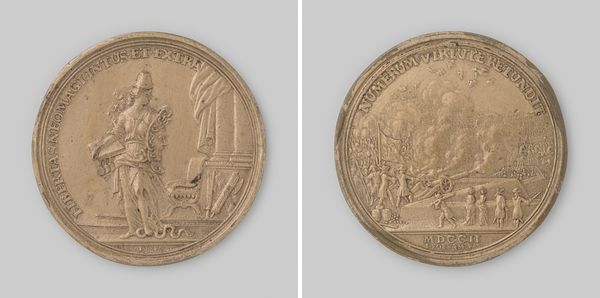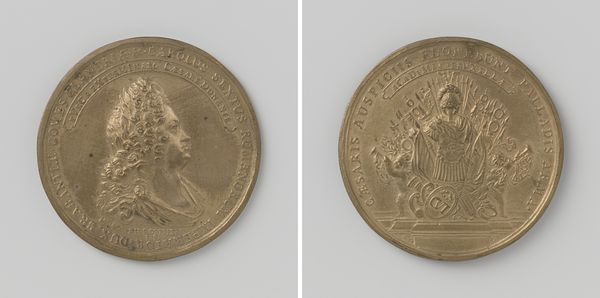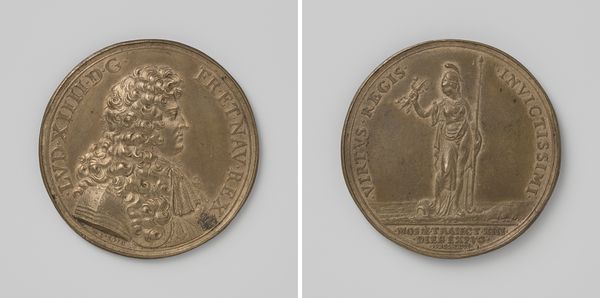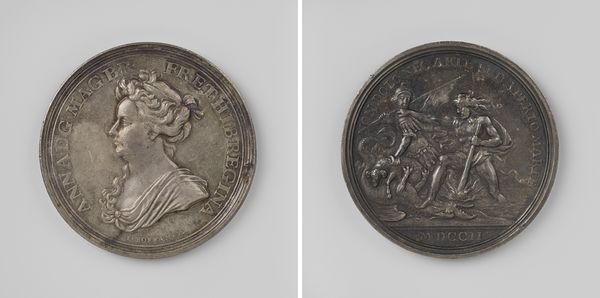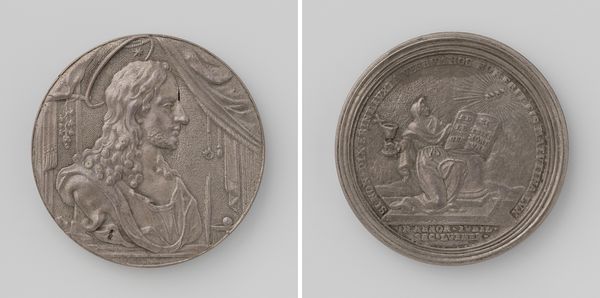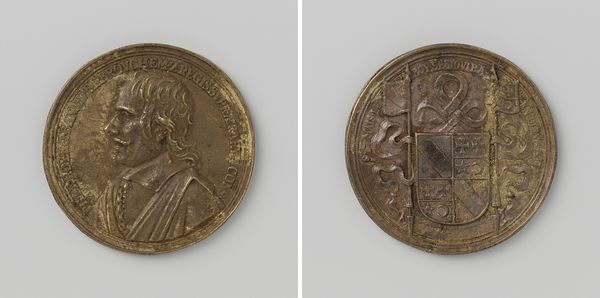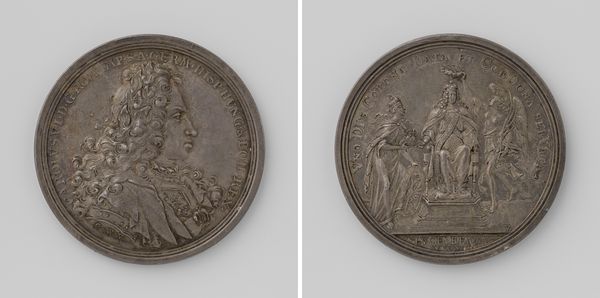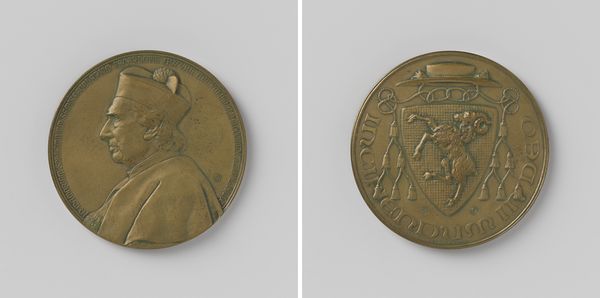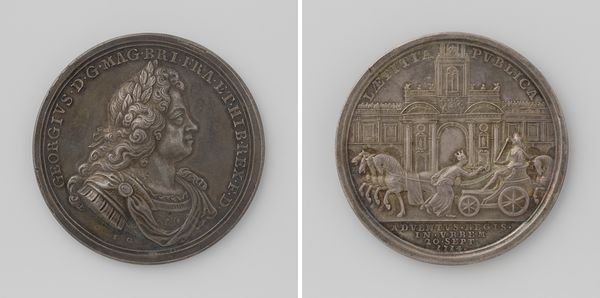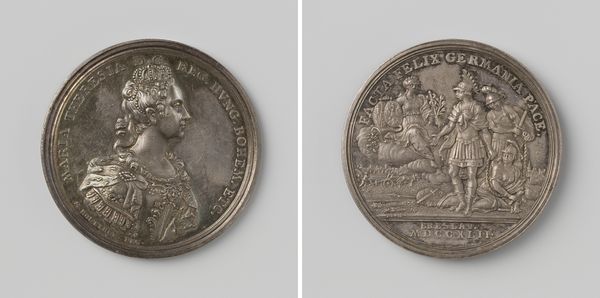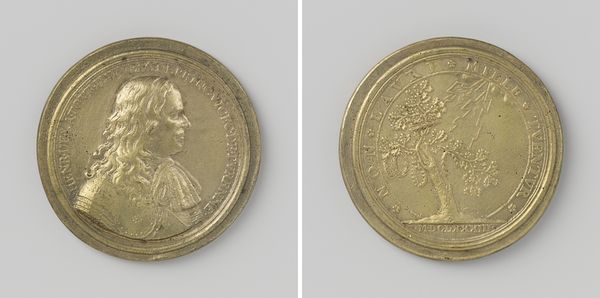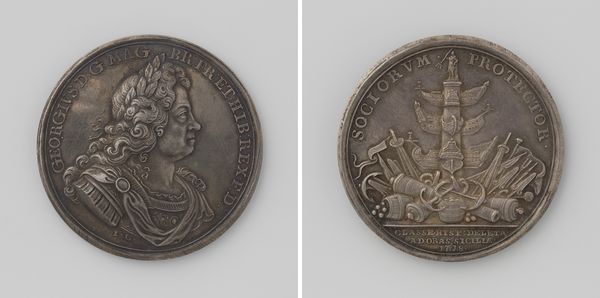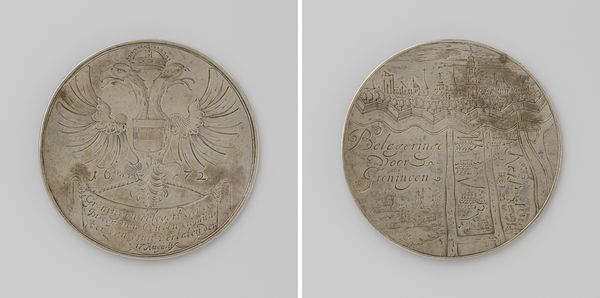
Zeeslag bij Kaap La Hogue, de Fransen verslagen door de vloot van Engeland en Holland 1692
0:00
0:00
print, metal, bronze, engraving
#
portrait
#
baroque
# print
#
metal
#
bronze
#
history-painting
#
engraving
Dimensions: diameter 4.8 cm, weight 44.66 gr
Copyright: Rijks Museum: Open Domain
Curator: Here we have a bronze engraving dating back to 1692, a piece created by Reynier Arondeaux titled "Zeeslag bij Kaap La Hogue, de Fransen verslagen door de vloot van Engeland en Holland," which translates to "Battle of La Hogue, the French defeated by the fleet of England and Holland." Quite a mouthful, isn't it? Editor: It is. My immediate impression is that it feels densely packed despite its small scale, almost claustrophobic with activity. Curator: Indeed. Arondeaux uses very fine, tight hatching to achieve a range of textures and tones on the coin. Look at how this technique describes the faces of William and Mary on the front, in comparison to the rendering of the chaotic naval battle on the reverse. Editor: The profile portraits immediately signify power and royalty; the double portrait creates an interesting symbol of joint sovereignty, emphasizing their shared rule during a tumultuous time in Europe. Curator: Precisely. The icon of Neptune on the reverse feels heavy-handed, but in alignment with baroque conventions. The artist uses this symbol to clearly allude to English maritime dominance, which helps them stake a claim to cultural, even providential destiny. Editor: He dominates the lower register, claiming it as his territory. The choice of Neptune as a figure resonates beyond this individual battle, though. He’s a recurring figure associated with English naval power throughout its history, solidifying a connection to classical maritime strength. Curator: You bring up a relevant point. One may question the stylistic anachronism, yet the artist is making a clear effort to weave together historical event with the symbolism of enduring dominion. Neptune's forceful figure and triumphal wreath serve to cast a retrospective view of historical and future maritime ventures. Editor: The coin functions then as not just a commemoration, but a strategic piece of nation-building imagery, creating layers of historical continuity to fortify a political point. Looking at this small artwork makes me consider its significance in shaping perceptions of a particular time. Curator: Quite. Delving into the compositional qualities and the calculated visual language of this engraving illuminates the multifaceted purpose it fulfills. Editor: And examining these iconic images across centuries demonstrates how symbols adapt, reinforcing shared historical awareness and a vision of the future.
Comments
No comments
Be the first to comment and join the conversation on the ultimate creative platform.
